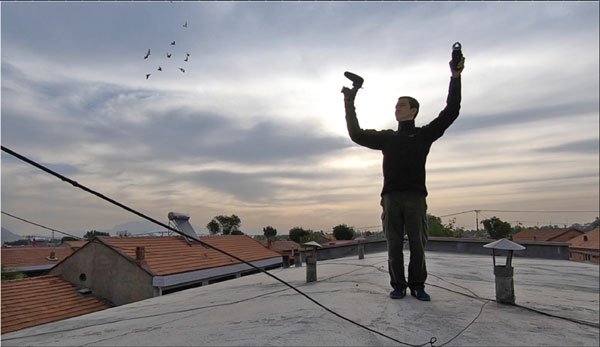The Vanishing Voices of the Capital
A City with No Windows
Come and check out a new display about the sounds and symbols of old Beijing at Beijing Postcards Gallery Store.
A hutong was originally a dirt road lined with grey walls and gates. Walking on the dusty streets of the capital, not much could be seen of what lay behind these barriers. So, over time, street vendors and watchmen of the city almost organically developed a system of chants and shouts, a coded language particular to the capital that communicated precise messages to people inside closed courtyard spaces.
A business district in Beijing around 1915
Over 10 years ago, artist Colin Chinnery realized that these sounds of the hutong represented a whole culture in themselves and that they should be collected before they disappeared. Equipped with a microphone, he tried to capture as many hutong sounds as possible. We have been lucky to borrow a few tunes from Colin for our new display A city with no windows, and we are very grateful for that.
Colin Chinnery recording Beijing's sounds
Hutong aficionados will know that even today you can still hear the cries from garbage collectors and the cling clang from knife sharpeners. But these few sounds do not compare to the hundreds of different chants that hoarse throats were blowing out with impressive force in the streets of Beijing in Imperial times.
Street vendor in Beijing
During the Qing, when the sun was out the streets belonged to the vendors. But as soon as the sky darkened, the Drum and Bell towers sounded, and the city gates and hutong fences were closed for the night and a curfew imposed throughout the entire city. People were now supposed to stay in their own designated areas and not roam around in the hutongs at will. This did not, however, mean that the streets fell silent. Drums were sounded every two hours all through the night, and during these two hour spells the watchmen would be heard coordinating their patrol with rattles, chants and hollow bamboo pieces. To a Beijing resident, this backdrop of noises was familiar even comforting, but to people coming from the outside it could be a nuisance.
The Drum and Bell Towers seen from the frozen Qianhai Lake, 1925
When Lord Macartney paid a visit to Beijing in 1793, desperately trying to make the Qianlong emperor interested in commodities from Europe, he himself and his entire entourage barely slept because of all of these unfamiliar noises in the night. In his diary, Macartney also comments on the hutong fences mentioned above. Originally in Qing times the hutongs had thousands such manned fences, in fact the name of the Dashilar area where our gallery is located literally means “big fence,” named after one of these alley gates. It adds to the picture of life in a hutong that you could shut it off like that. Recently, to our excitement, we found a picture of what the gate at Yang meizhu xiejie where our gallery is located looked like in the early republican period.
The Drum and Bell towers conducted the opening and closing of the hutongs for hundreds of years. Sadly, as recorded by the art historian Wu Hong, the author of the excellent book Remaking Beijing, nobody today remembers how the drums of the Drum Tower were beaten in Imperial times. We can see from newspaper articles that in 1924 the warlord Feng Yuxiang brought an end to the use of the Drum and Bell towers, apparently because he wanted to silence the last remnants of Imperial China. Some people pleaded that the old drummers of the tower should be allowed to stay on duty due to the cultural importance of their task, but their prayers were not answered and the very sound that once conducted the rhythm of a whole city was forgotten.
Read more about the code language of the Capital.



